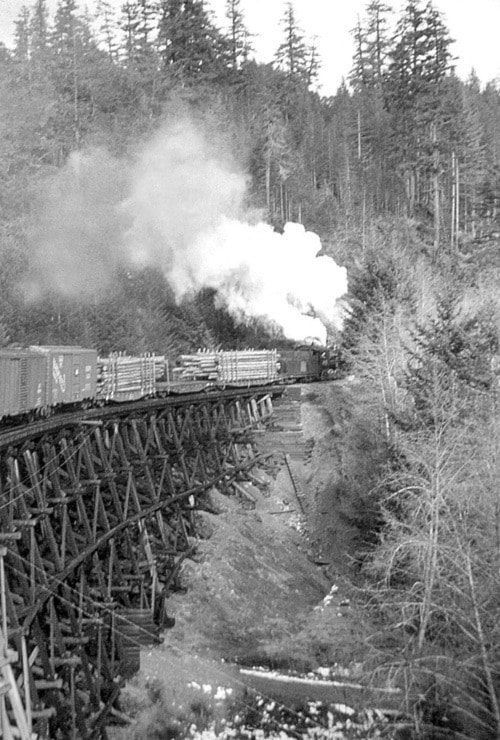No longer heard today, the mournful wail of a steam locomotive’s whistle was a feature of our lives for half a century. This 1950s view shows a locomotive hauling a load of poles from the uplands forests of the Sooke hills. The Western Red Cedar poles were destined for use as utility poles in the fast-growing U.S. market.
Charters trestle, in the photo, shows the original wooden timbers as installed by the Canadian Northern Pacific Railway during World War I. The line was taken over by the Canadian National and up until the 1960s the train plied its way daily, hauling a load of cars carrying variously logs, poles, pilings and milled lumber. In its last years, the train carried munitions on this secluded inland route from Cowichan Bay to Rocky Point, but by that time steam locomotives had been replaced by diesel.
After the last train ran in the early 1970s, the line’s right-of-way was sold to the province of B.C. Leased by the Capital Regional District, it has become the Galloping Goose Regional Trail. This 55.5 km trail is one of the most popular hiking and cycling routes on southern Vancouver Island. The Charters trestle is just visible through a foliage of trees, from the Charters River Salmon Interpretive Centre, though the bridge’s timber girders have now been replaced by steel.
A woodland walking route that offers spectacular scenery, flora and fauna has replaced an industrial grade that once helped fuel the island’s economy.
Those of us who remember the chug and hiss of the locomotives and the distinctive, long-drawn out romantic wail echoing through the hills will never forget these sounds of the past.
Elida Peers,
Historian
Sooke Region Museum
